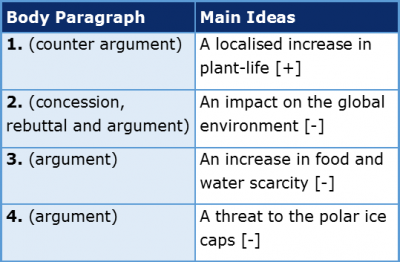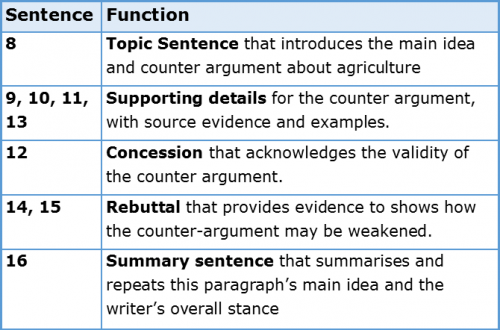How is an evaluative academic essay structured?

This is the third of four chapters about Evaluative Essays. To complete this reader, read each chapter carefully and then unlock and complete our materials to check your understanding.
– Introduce the possible structures of an evaluative essay
– Explain the block and point-by-point essay structures
– Provide an example introduction and body paragraph to help guide the reader
Chapter 3
In Chapter 2 of this four-chapter reader, we discussed three important steps in the planning process of an evaluative essay that students should follow if they wish to ensure they’ve approached their topic in an effective and academic way. By using source materials, taking notes and creating tables of the most salient evaluative criteria, you should now have a clear set of arguments both for and against your topic and have formed a stance that includes your opinions and judgements. You should now therefore be ready to begin writing, and so this chapter focuses on the common essay structure of an evaluative essay. Please note that there is not one way of writing such an essay. The following structure is, however, commonly accepted to be clear, logical and well organised.
1. The Introduction
As with all academic essays, the introduction is the first paragraph that the reader will come into contact with, and so it’s therefore necessary to provide the reader with all the information they’ll need to contextualise and prepare them for the essay. To demonstrate an effectively written introduction, let’s first look at an example background information that contextualises our question from Chapter 1: ‘Evaluate the Impacts of Global Warming’.
The phenomenon that is often referred to as global warming was first coined in 1978 by climate scientist Alfred Sinclair.1 Sinclair (1978 p. 95) announced to the world that the temperature of the Earth had increased by ‘half a degree in the last 30 years’.2 Although it may not sound significant, this increase is more than the total increase of the previous 200,000 years (Mcleod, 1990).3 The temperature has continued to rise since Sinclair’s announcement, which most scientists attribute to the significant increase in greenhouse gases that prevent solar radiation exiting the Earth’s atmosphere.4 However, to what extent this phenomenon is going to negatively effect life on this planet is contested.5
A logical set of background information to the topic of global warming would likely first introduce the broad topic and provide any key facts about it’s discovery and history to hook and engage the reader, as can be seen in sentences (1) and (2). After introducing the general topic (usually following a general-specific structure throughout the introduction), the writer may then wish to include one or a number of optional elements, such as a focus on the significance of the topic (3), definitions of any key terminology or concepts (4), and perhaps a further narrowing of the topic focus in preparation of this essay’s thesis statement.
While the above elements may apply to any essay type, the next crucial step in constructing the introduction of an evaluative essay would be to include a thesis statement that outlines the specific focus and task of this essay, indicating also the writer’s stance and the criterion that will be presented and evaluated in the main body paragraphs in the form of an outline. What’s more, because it’s common in academic writing for an evaluative essay to present both counter-arguments and arguments (positive and negative criterion), perhaps the most common way of achieving all of these features within one thesis statement would be to follow a structure similar to the following:
Although some possible benefits may occur as a result of rising temperatures such as a localised increase in plant-life, this essay argues that global warming is having a mostly negative impact.6 The majority of evidence indicates that the consequences of climate change are not only negatively impacting the global environment, but are increasing food and water scarcity and threatening the existence of the polar ice caps.7
In sentence (6), the use of the dependent clause beginning with ‘although’ is one of the most effective ways for a student to include the counter-argument and argument and essay focus within a single sentence. In this case, the use of the word ‘possible’ acts as hedging language to weaken the claim that there are positives to global warming, while similarly the use of the word ‘mostly’ indicates acknowledgement that it’s not possible for the writer to be 100% confident in their stance. Finally, sentence (7), provides the outline of this essay’s body-paragraph main ideas. The outline signposts to the reader the main arguments of the essay in the same order that they will be presented in the body section.
2. The Body Section
The aim of the body section of an evaluative essay is to coherently and concisely present convincing evidence both for and against the topic of the essay while maintaining the clarity of the overall writer stance. How the body section is structured may be quite varied, but judging by our outline as presented previously, our example essay on global warming follows what’s known as a block structure. As can be seen in the following table, a block structure usually deals first with the counter argument and then provides the main arguments of the essay in the subsequent body paragraphs

Please note here that to create a sophisticated argument, it’s also important for the writer to provide concession and rebuttal, in which certain aspects of the first paragraph’s counter argument are agreed with (conceded to) before a rebuttal of that same argument is provided in the form of opposing evidence.
However, the block structure is not the only structure a student could follow for an evaluative essay body section. With a point-by-point structure, instead of simply providing one counter argument, a connected concession-rebuttal and argument and perhaps two additional arguments, the writer could provide counter argument, concession-rebuttal and argument for each of the essay’s main ideas, as is shown in the following structure:

Whichever structure you decide to follow or manipulate, it’s important in an evaluative essay that only one or (maximum) two main idea are explored within each paragraph. Having too many ideas and arguments will very likely weaken the claims made in that paragraph as there will be little room for a student to develop their argumentation or provide convincing supporting details.
To make the body section of an evaluative essay somewhat clearer for you, we’ve deconstructed the first body paragraph from our example evaluative essay on global warming below:
One commonly highlighted positive impact of global warming is the possible increase in plant-life in cold regions of the planet.8 Butler (2017) argues that by 2030 there will be 8% more arable land available in areas that have historically been too cold for agriculture.9 For example, uninhabited parts of Siberia may become more likely to have wide expanses of fertile and farmable land.10 White (2018) claims that regions such as Siberia could experience an agricultural boom, and that climate change in this respect may encourage different migration patterns for both humans and animals.11 From this perspective, global warming is not necessarily a threat to humanity and the Earth.12 Similarly, Jenkins (2013) suggests that the arctic tundra will see an increase in plant reproduction, which will almost certainly result in new species emerging within that region.13 However, scientists such as Jenkins also acknowledge that the regions to which they are referring are often those which ‘do not receive a significant amount of sunlight’ (White, 2018, p. 09).14 Therefore, in terms of agricultural land, these areas cannot be considered a viable option to replace current land.15 Ultimately, the argument that global warming will provide life new opportunities is not yet well developed.16

For more guidelines on how to structure an evaluative essay, continue studying with Chapter 4. In our final chapter on this topic, we provide a complete five-paragraph essay that critically evaluates the impacts of global warming on our planet. Once you’ve finished this short reader, you may then wish to check your overall comprehension of this topic by unlocking and completing our beginner, intermediate and advanced worksheets.
To reference this reader:
Academic Marker (2022) Evaluative Essays. Available at: https://academicmarker.com/essay-writing/essay-types/evaluative-essays/ (Accessed: Date Month Year).
Downloadables
Once you’ve completed all four chapters about evaluative essays, you might also wish to download our beginner, intermediate and advanced worksheets to test your progress or print for your students. These professional PDF worksheets can be easily accessed for only a few Academic Marks.
Collect Academic Marks
-
100 Marks for joining
-
25 Marks for daily e-learning
-
100-200 for feedback/testimonials
-
100-500 for referring your colleages/friends